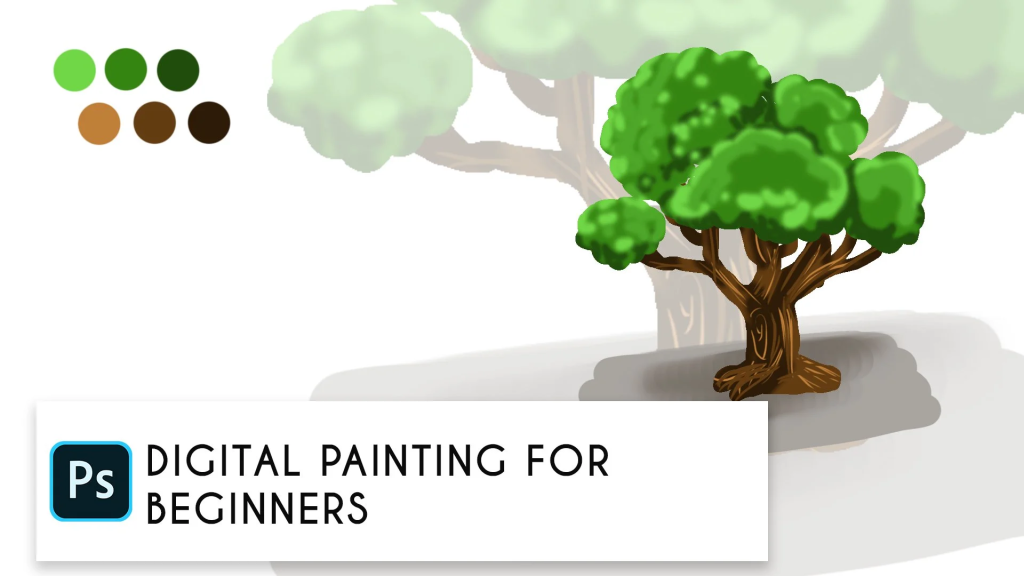
For countless individuals, painting has represented a cherished avenue for artistic expression. Yet, for many beginners, the prospect of contending with messy brushes, paints, and canvases can prove daunting. Thankfully, digital painting offers a pristine and accessible alternative, affording aspiring artists the opportunity to unleash their creativity sans the logistical hassles of traditional art supplies. Adobe Photoshop, a preeminent software in the realm of digital artistry, boasts powerful tools and features tailored to simplify the initiation process for novices venturing into digital painting. Within this introductory guide, we’ll delve into the realm of mess-free painting in Photoshop, empowering you to embark on your digital painting journey with confidence and boundless creativity.
Your Digital Studio Awaits – To begin, acquaint yourself with the foundational elements. Open Photoshop and delve into the fundamental tools: brushes, palette, layers, and selection tools. These will serve as your steadfast companions throughout your artistic odyssey. Keep in mind, the beauty lies in customization; feel free to tailor brush sizes, colors, and textures to align with your unique style.
Embrace the Sketch (Digitally, of course!) – Prior to delving into the realm of colors, commence with a sketch. Employ the pencil tool or a textured brush to outline the composition. Disregard the pursuit of perfection at this stage; consider it merely a preliminary roadmap for your forthcoming masterpiece.
Base it Up– Now, onto the enjoyable phase: applying base colors. Utilize large, soft brushes to block in your initial colors, akin to filling in the major sections of your painting. Keep in mind that this is merely the foundation, and you can always refine and adjust these colors later in the process.
Layering the Magic – Layers serve as invaluable assets in your artistic toolkit! Establish separate layers for distinct elements such as shadows, highlights, and textures. This approach enables you to adjust each component independently, granting you enhanced control and flexibility over your composition.
Blending is Believing – Achieving depth and realism hinges on effective blending techniques. Employ tools like the blur brush or the smudge tool to gently soften harsh edges and forge seamless transitions between colors. Experiment with various blending modes to unlock even more creative possibilities and enhance the overall impact of your artwork.
Details Make the Difference – With the groundwork laid, it’s time to add the final flourishes. Employ smaller brushes to incorporate intricate details such as textures, highlights, and shadows. Bear in mind that restraint is often more effective; resist the urge to overwork your painting, allowing its essence to shine through with subtlety and finesse.
Happy Accidents Welcome – Embrace the beauty of the digital realm: the omnipresent undo button! Fear not experimentation or mistakes; they’re integral to the creative process. With the luxury of undoing, feel empowered to explore uncharted territories. Remember, some of the most delightful discoveries arise from unexpected “mistakes” that enrich and elevate your artwork.






Leave a Reply
You must be logged in to post a comment.